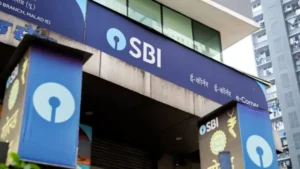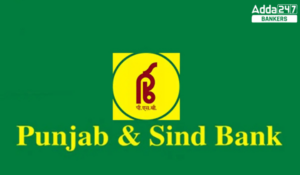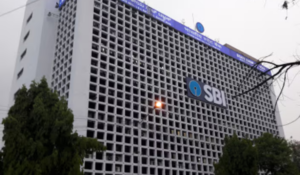Dear Readers,
Just a few days are left for SBI PO and NIACL Assistant Examination. It is time to pace up your preparation for SBI PO Prelims and NIACL Assistant Prelims 2017. These Reasoning questions will also help you in preparing for BOB PO and NICL AO 2017 recruitment examination.
Directions (1-5): Study the following information carefully and answer the questions given below:
A, B, C, D, E, F, G, and H are eight persons and they like different colours viz. Red, Blue, Pink, Black, White, Brown, Yellow, and Violet but not necessarily in the same order. Some of them are sitting either facing to centre or opposite to centre in a circle. There are two persons sitting between A and H, who likes Violet colour. G sits second to left of A. G likes yellow colour and sits not adjacent to H. F likes brown colour and sits third to left of A. F faces the same direction as A. There are three persons sitting between F and B, who likes black colour. D likes white colour and sits not adjacent to B. E likes pink colour and sits third to the right of D. A does not like the blue colour. A faces D. Both the immediate neighbor A faces the same direction as A( Faces the same direction means if A faces towards the centre, then both neighbor of A faces towards the centre and vice-versa). The immediate neighbor of D faces opposite direction ( Opposite direction means if one nighbour of D faces towards the centre then other neighbor faces opposite to centre and vice-versa). C sits immediate right of B, and both faces opposite to centre. The immediate neighbor of E faces opposite direction(Opposite direction means if one nighbour of E faces towards the centre then other neighbor faces opposite to centre and vice-versa).
Q1. C likes which of the following colour?
(a) Red
(b) Black
(c) Blue
(d) Violet
(e) None of these
Q2. Who sits third to the right of F?
(a) D
(b) H
(c) C
(d) A
(e) None of these
Q3. Who sits third to the left of B?
(a) G
(b) H
(c) A
(d) C
(e) None of these
Q4. Four of the following five are alike in a certain way based on their seating positions and so form a group. Which of the following is different from the group?
(a) A
(b) C
(c) F
(d) D
(e) H
Q5. Which of the following statements is/are definitely false?
(a) E is the immediate neighbor of A
(b) G sits immediate right of F.
(c) D is the immediate neighbor of F.
(d) G sits immediate right of E.
(e) A likes red colour
Directions (6-10): Study the information and answer the following questions:
In a certain code language
“There are numerous ways ” is coded as ” X@25 O@21 B#18 U#18 ”
“rightful due political economy” is coded as ” F#13 Q#1 E#21 S@21″
“work culture to provide” is coded as ” X@18 Q#4 D#18 U@20″
Q6.What is the code for ‘requisite’ in the given code language?
(a) R#20
(b) S#18
(c) T#20
(d) S#20
(e)None of these
Q7.What is the code for ‘proximity’ in the given code language?
(a) R#25
(b) M#25
(c) Q#20
(d) L#25
(e)None of these
Q8.What may be the possible code for ‘ visible reminder’ in the given code language?
(a) S#5 W#12
(b) S@5 X#12
(c) S@5 W#12
(d) T@5 W#12
(e)None of these
Q9.What may be the possible code for ‘waiting time’ in the given code language?
(a) X#7 V@5
(b) X@7 U@5
(c) X#7 U#5
(d) X#14 U@13
(e)None of these
Q10.What is the code for ‘publicly enforcing’ in the given code language?
(a) R@25 F#7
(b) Q#25 F#7
(c) Q@25 F@7
(d) Q@12 F#14
(e)None of these
Q11. Of the five poles P, Q, R, S and T situated close to each other, P is to the west of Q, R is to the south of P and T is to north of Q and S is to the east of T. Then R is in which direction with respect to S?
(a) North-west
(b) South-east
(c) South-west
(d) Data inadequate
(e) None of these
Q12. A man starts walking from point P. He goes 90 metres in the East before turning to his right. He goes 20 metres before turning to his right again and walk 30 metres and reaches point Q. From point Q, he goes 100 metres to the North and reaches point R. What is shortest distance between P and R?
(a) 80 metres
(b) 100 metres
(c) 140 metres
(d) 260 metres
(e) None of these
Q13. If ‘A $ B’ means ‘A is the father of B’, ‘A # B’ means ‘A is the daughter of B’, ‘A @ B’ means ‘A is sister of B’, then how is K related to M in H @ K $ L # M ?
(a) Husband
(b) Uncle
(c) Father
(d) Cannot be determined
(e) None of these
Q14. If ‘P $ Q’, means ‘P is the father of Q’; ‘P # Q’ means ‘P is mother of Q’; ‘P * Q’ means ‘P is sister of Q’, then how is D related to N in N # A $ B * D?
(a) Nephew
(b) Grandson
(c) Granddaughter
(d) Cannot be determined
(e) None of these
Q15. In a class, six students M, N, O, P, Q and R are the top six Rank holders, not necessarily in the same order. O did not get the 4th rank. M’s rank is higher than R’s and O’s but lower than N’s. Among these six rankers, there are four students whose ranks are lower than P’s rank and five students whose ranks are above that of Q. Who is ranked 5th in the class?
(a) R
(b) O
(c) Q
(d)N
(d) None of these




 SBI Clerk Syllabus 2026 and Exam Pattern...
SBI Clerk Syllabus 2026 and Exam Pattern...
 Punjab and Sind Bank 2025 Exam Date Out,...
Punjab and Sind Bank 2025 Exam Date Out,...
 SBI PO 2026 Notification, Exam Date, Sel...
SBI PO 2026 Notification, Exam Date, Sel...








